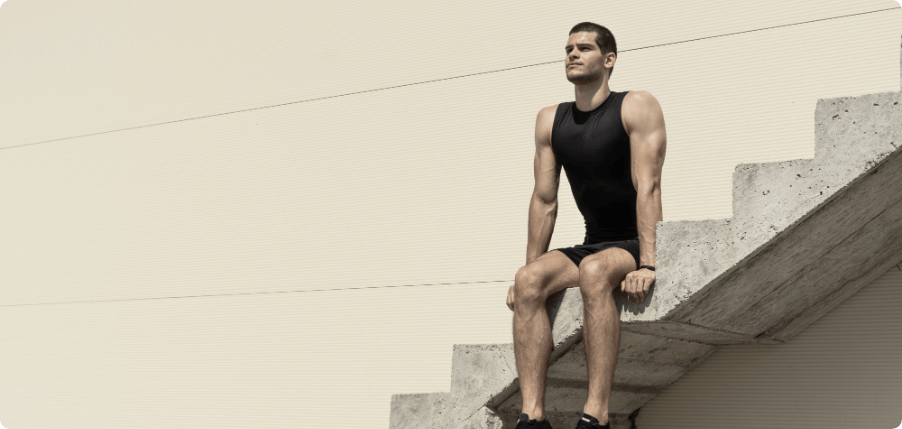Visualization In Sport

Visualization in Sport
Imagery and visualization in sports psychology is when your mind talks to your body by using mental images. This dialogue is going on all the time, sometimes in healing ways and sometimes in harmful ways – although much of the time you may not be consciously aware of it. Likewise your conscious and subconscious mind communicates with each other by using imagery.

Your mind may think in words but your body responds to images as though they were really happening right now. If you remember an argument that you had with a friend yesterday, your body reacts today as though you were still fighting. Close your eyes and remember the last time you argued with a close friend or enemy, and pay attention to what happens to your body. You may notice that your breathing has become more rapid or shallow, your muscles have tightened your heart is beating faster and you feel anxious and disturbed.
Now remember the last time you felt close to a friend or loved one, or imagine a peaceful scene. Once again pay attention to what happens to your body. You may notice that your body has begun to relax, your breathing has become deeper and more regular, your heart rate has slowed and you feel good.Here is one more example. Imagine you are holding an intensely plump, juicy lemon in your hand. Imagine now that you are dropping it on a table and listen to the ‘thud’ it makes. Now visualize you are taking a sharp knife and cutting it in half. Take one half of the lemon (still in your imagination) bring it up to your nose and scratch the surface with your fingernail. Imagine what it smells like. Finally, visualize that you are biting into it. By now, your mouth would have probably started salivating as though you really were biting into a ripe lemon.
Your mind talks to your body by using such mental images. This dialogue is going on all the time, sometimes in healing ways and sometimes in harmful ways – although much of the time you may not be consciously aware of it. Likewise, your conscious and unconscious mind communicates with each other by using imagery.
Visualization also called Imagery, can be done by using any of your senses, but it seems to work best when you combine several of them. In the example above, you used all your senses – sight, sound, touch, smell, and taste.
Dr. Armand Nicholi, a professor of psychiatry at Harvard and one of the team physicians at the New England Patriots says –“The best players use any method to gain a fraction of an edge over their opponents and mind/body techniques like Imagery/Visualization can provide that edge.”
Many professional athletes and find visualization to be a powerful tool to enhance their performances. Baseball legend Yogi Berra says “Ninety percent of the game is mental toughness and the rest is physical.
Mary Lou Ren the first American woman to win an individual Gold in Gymnastics said – “Doing mental Imagery was always a constant for me. I would see myself performing in my head and it worked tremendously for me. It gave me a lot of confidence in sport. After a workout and dinner, I would be lying down in my bed and reviewing all my moves done in the day. It was especially helpful in the Olympics which was so important to me. I did all the routines in my head the night before the competition. Since I had trouble with the balance beam, I would review it a lot in my mind picturing myself landing straight on the beam.”
Jerry Rice (Football) says – “I think my attitude is the reason for being so successful on the field. I simply concentrate on the defence hacks all week, study their every move, how each player will react when a receiver comes his way. I visualize everything that is going to happen in a football game. I know exactly what I am going to do, how I would run the pattern on the defensive back. I have got it down till the last step.” He choreographs his moves at least 3 days before a game. Greg Louganis, Olympic Diving Champion, visualizes each dive from start to finish, and believes this is crucial to his performance. He first learned this technique in his childhood dance class.Elizabeth Manley, Olympic Silver Medalist in 1988 Winter Games in triple Lutz jump says- I used a great deal of imagery. I would stand by the side of the board, close my eyes and picture myself doing the jump perfectly in my mind. Nine out of ten times I would successfully do it by preparing this way. Eventually, we captured a couple of perfect jumps on videotape. I watched it over and over until it was engraved in my mind. I would actually see in my mind the entire body, the lutz jump and the perfect landing. I was then able to take with me the entire image on to the ice and picture myself doing the perfect jump before it came to perform. I would practice my imagery every night before I went to sleep. I think training for ten minutes this way is equivalent to doing 45 minutes exercise on ice. I began practicing mind/body techniques for two years before going to the 1988 Olympic Games.
Besides visualization, progressive relaxation and breathing exercises helped me calm down. I believe mind/body techniques had a lot to do with my success.
Dr. Armand Nicholi, a professor of psychiatry at Harvard and one of the team physicians at the New England Patriots says –“The best players use any method to gain a fraction of an edge over their opponents and mind / body techniques like Imagery/Visualization can provide that edge.”
Visualization can produce measurable changes in the body. Psychologist Richard Suinn, Phd. recorded muscle activity of a skier visualizing himself racing downhill. He found that the activity recorded was similar to that of a skier actually racing downhill.
Visualization can be done by using any or all your senses. Even if you don’t “see” mental images in your mind’s eye, you may “taste” food, “smell” fragrances, “hear” sounds or “touch” something or someone.
There is no right or wrong way of visualization, only what works for you. Speak to our badminton coaches at PSM to learn more about this technique and apply it in your game.
